The diamondback moth (Plutella xylostella), sometimes called the cabbage moth, is a moth species of the family Plutellidae and genus Plutella. The small, grayish-brown moth sometimes has a cream-colored band that forms a diamond along its back. The species may have originated in Europe, South Africa, or the Mediterranean region, but it has now spread worldwide. Diamondback moths are considered pests as they feed on the leaves of cruciferous crops and plants that produce glucosinolates and make windows on by feeding on leaves. Originally, pesticides were used to kill the moths but diamondbacks have developed resistance to many of the common chemicals. For this reason, new biological and chemical controls, as well as different planting methods are being pursued to reduce the destruction caused by the moths.
Attracting Insect Species: Diamondback moth (Plutella xylostella)
Used In Crops: Cabbage, Cauliflower, Chinese cabbage, and other cruciferous vegetables.
Suitable trap: Water Trap/ Delta trap/ Sticky Trap
Pest Identification:
This small moth is colored gray and brown. It can potentially be identified by a cream-colored band that may be present in the shape of a diamond on its back. The diamondback moth has a wingspan of about 15 mm and a body length of 6 mm. The forewings are narrow, brownish-gray, and lighter along the anterior margin, with fine, dark speckles. A creamy-colored stripe with a wavy edge on the posterior margin is sometimes constricted to form one or more light-colored diamond shapes, which is the basis for the common name of this moth. The hind wings are narrow, pointed toward the apex, and light gray, with a wide fringe. The tips of the wings can be seen to turn upward slightly when viewed from the side. The antennae are pronounced. Larva is green in color with a pointed head and tail.
Damage:
Plant damage is caused by larval feeding. Although the larvae are very small, they can be quite numerous, resulting in complete removal of foliar tissue except for the leaf veins. This is particularly damaging to seedlings, and may disrupt head formation in cabbage and cauliflower.
Life Cycle:
Diamondback moth has four life stages i.e egg, larva, pupa and adult. Crop damage is caused by the larval stage. Normally, the diamondback moth takes about 32-35 days to develop from egg to adult. The adult moth is approximately 8 to 9 mm long with a wing span of 12 to 15 mm. Adult females lay an average of 160 eggs during their life span of about 16 days. Eggs are oval, yellowish white and tiny. They are glued to the upper and lower leaf surfaces singly or in groups of two or three. Eggs hatch in about five or six days. Immediately after hatching from the egg, larvae burrow into the leaf and begin mining the leaf tissue internally. After feeding within the leaf for about a week, the larvae exit from the underside of the leaf and begin feeding externally. During the larval stage which lasts about 10 to 21 days, depending upon temperature and the availability of food. At maturity the larvae are about 12 mm long. The pupae are light green but as they mature, they become brown as the adult moth becomes visible through the cocoon. The pupal stage lasts from 5 to 15 days, depending on environmental conditions.
Technology:
Insect Sex Pheromone Technology It is the process of attraction and trapping the insect pest of specific Species those damage to crops.
Per Acre Use:
Water Trap or Delta trap Or Sticky trap with DBM lure at 10/Acre for controlling.
Benefits:
Economically Affordable, easy to install and manage.
If used properly can detect low numbers of insects.
Collect only Species Specific
Non toxic.
Suitable for all season.
Pheromone Lures are species specific.
Reduce the use of harmful pesticide, encourages doing organic farming.
Features:
Pheromone used 99% pure.
99.9% Effective from other commercial product.
Lure working day in field life 30- 45days, Depend on weather conditions.
Packing signal unit in anti smell realizing pouch.
Dispenser - Septa
Lure can stay for one year without removing from packing.
Precaution:
Please use hand gloves /Keep clean hand for handling lure.
Hang trap 1 to1.5 feet above crop canopy.
Avoid direct contact of lure with other chemical.

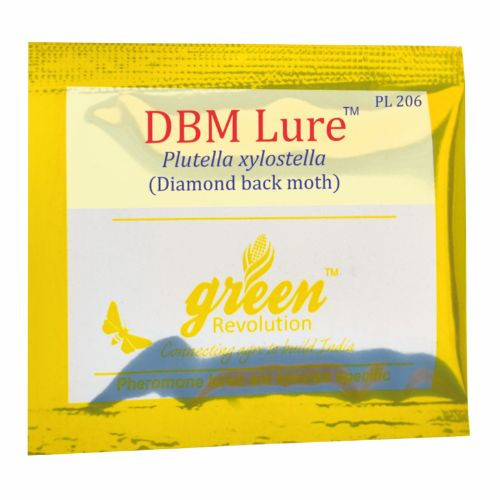
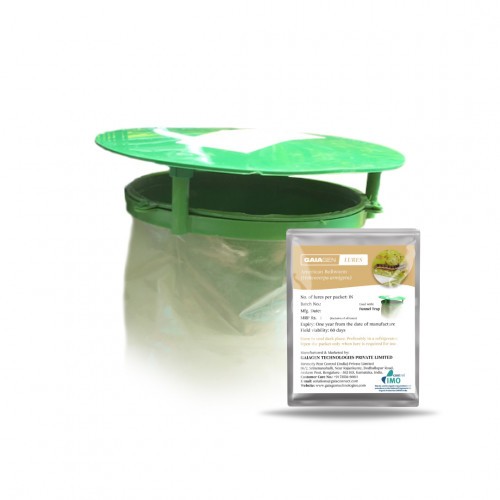
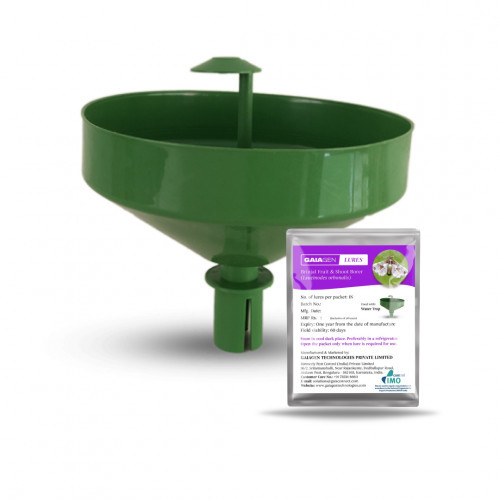

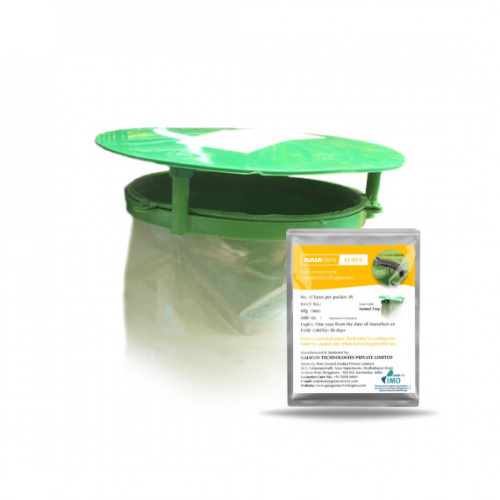
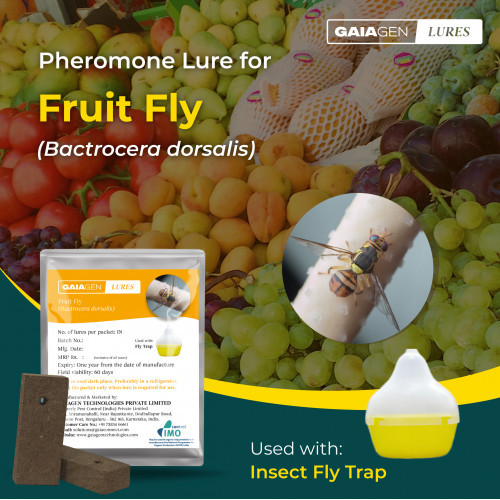
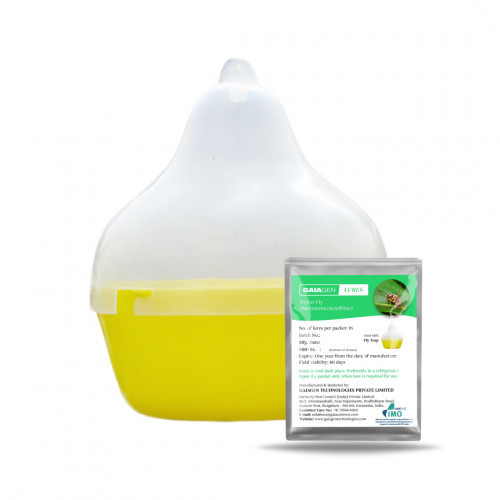
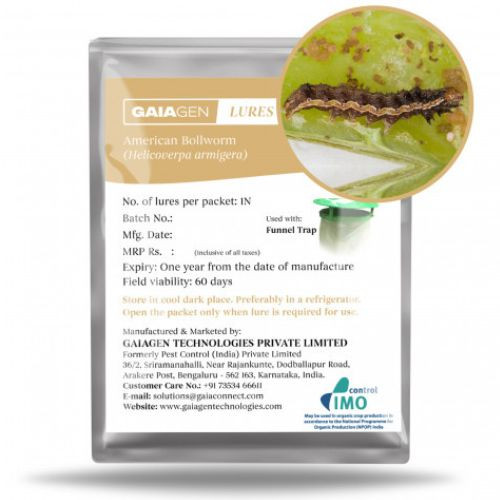
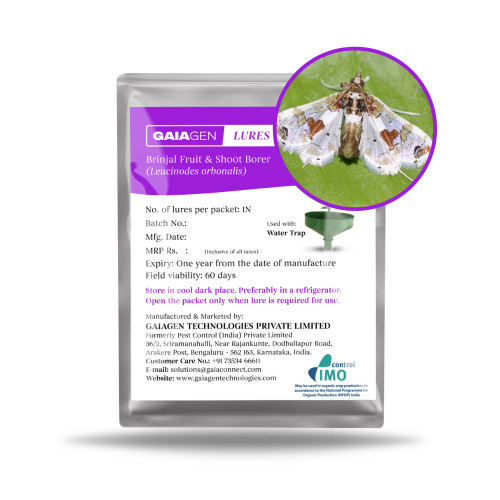
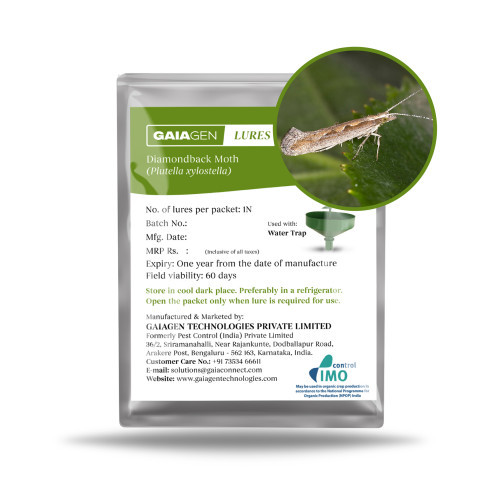
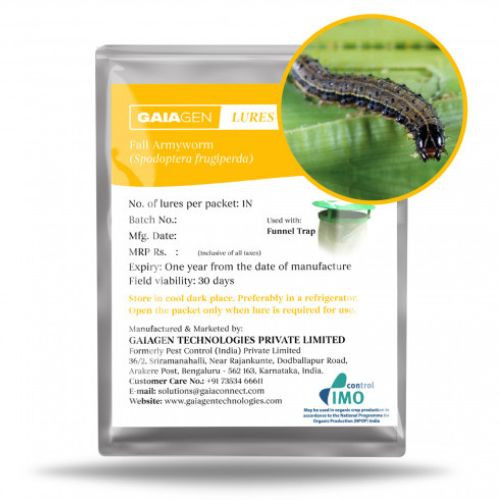


0 Review For This Product